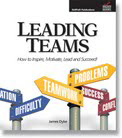RULE #4 – Don’t be a sissy: Be productive and results-oriented
It should go without saying (but here goes anyway!)—Success in work is not simply about activity (just putting in time); it’s all about productivity (getting results). An essential part of the role of a leader is to get their people on board with key goals they are expected to accomplish. Sometimes those goals are provided by higher-ups in the organization. But at higher levels in the organization, leaders and teams are often expected (by higher-ups) to have the knowledge and skill needed to determine for themselves what goals and objectives are necessary to support the success of the organization.
In any case, it’s the leader’s responsibility to engage; motivate; and mobilize team members around those goals—and even more important, to help the team own those goals and really want to accomplish them! Google puts it this way:
Focus on what employees want the team to achieve and how they can help achieve it.
In creative industries like Google, this may entail encouraging team members to innovate and invent their own projects and products. In other organizations, it may be more about helping team members to be engaged with the on-going work and processes they don’t have as much control over—the day-to-day activities and tasks that ultimately contribute to their success and achievement.
In any case, it’s the leader’s job to help the team gain buy-in of their common goals, and to help employees identify effective paths to complete them.
The most practical way for a leader to do this is to involve the team—involve them in assessing the needs; identifying essential goals; and creating a plan to achieve success. Here’s a simple way to accomplish this: Make sure team meetings are highly interactive; collaborative; and participatory! Beyond that, an effective leader must also superintend these processes, to make sure the right goals are identified and the road to achieve them is accessible. Google puts it this way:
Help the team prioritize work and use seniority to remove roadblocks.
It is not enough to identify all the worthwhile things the team could do, to contribute to the success of the organization. A good team leader will help the team to identify the essential things the team must do! Establishing priorities is the most important step to organizing and managing work. A team without priorities is a team without direction.
But sometimes, the team needs help gaining the support and contributions of other areas of function, authority, and responsibility in the organization. For that, they need the team leader to “run interference” for them—to represent them and champion their work with other teams and departments. It requires the team leader to build effective “internal business alliances” with others in the organization—those whose work provides the support the team needs in order to be effective. It’s the essence of organizational politics and collaboration. How important is this? Building collaborative relationships with key colleagues is the number one priority for anyone moving into a new position of leadership. And yes, it is often the focus of my work with executive coaching clients, who suffer from inadequate and counter-productive political skills. Even with remarkable talent, skill, or experience, they often fail to achieve their potential simply because they are such odious colleagues! You will find plenty of practical help with some of my previous publications. You can access them here:
LeadershipTracks Newsletter Issue#12 – Make Friends with People and Processes
The Personal Trainer – Issue #12
Building collaborative relationships is at the heart of becoming a person of influence. And team leaders will have limited success if they don’t build influence and persuasion with others across the organization. Trying to use coercion and pressure to move others ultimately becomes counter-productive.
So, how does a leader become less coercive and more influential?
Moving from coercion to influence is a matter of adopting the right interpersonal habits in the workplace. I have written about this before, describing how leaders can develop “likeability” with others in the organization. You can access a copy of this from my website by using the following link:
The Top Ten Habits of Highly Likeable People
I can’t emphasize enough how important it is for a leader to become a person of influence—it is central to success at all levels of leadership in an organization. And the higher you rise in any organization, the more your success depends on it! It becomes highly critical at executive levels. And the lack of it will absolutely inhibit your advancement and promotion.
This is why much of my work as an executive coach focuses on helping my clients grow in this area—to adopt the constructive habits (both behaviorally and attitudinally) that enable them to be effective in this regard.
If you would like some help with this, call us! Our confidential one-on-one sessions have been proven to be effective—we have many satisfied clients, including those who have experienced promotions as a result of our coaching.
And if you have a subordinate whose leadership is lacking in this critical area, don’t delay—contact us now and we can provide immediate help!
Until next time… Yours for better leaders and better organizations,
Dr. Jim Dyke – “The Boss Doctor” ™ at Corporate Leadership Initiatives, Inc.



